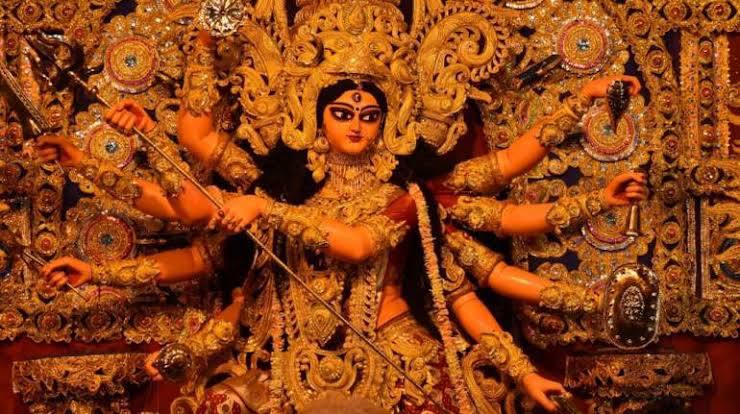Because Navaratri is a pan-India celebration, the rituals and practices vary according to the culture, tradition, and population of the region. As a result, rituals practiced in one region are not practiced in another. Some unusual Navaratri ceremonies are listed here.
Worshipping weapons:

Ma Parvathi is the Goddess of Power and Courage and is one of the divine feminine triad worshipped at Navaratri. Sakthi is another name for her, and she is worshipped in several incarnations such as Durga, Chandi, and Kali. Invoking the goddess, followers believe, makes them strong and determined.
During the days when India had a monarchy, monarchs, warriors, and soldiers worshipped Ma Durga by laying their weapons in front of her and asking for her blessings to win wars and duels. This tradition is still followed by Kshatriya caste members today. Before starting a conflict, the monarchs also prayed to the Goddess.
Navaratri Kolu:

This is a Tamil Nadu-only ritual. During Navaratri, dolls of Gods and Goddesses, saints, temple miniatures, animals, birds, and other figures are neatly arranged on a step-like structure and worshipped for ten days.
Kolu dolls are often fashioned of clay or wood. The Kolu stand has a number of steps that are multiples of odd integers, such as 3,5,7,9, and so on. For nine days, the women prepare special delicacies for the Kolu dolls and sing bhajans. The women of the neighborhood are also asked to attend the celebration, and prasad is distributed to them. Women who attend bhajans receive presents like fabric bits, bangles, and kumkum, among other things.
Sondhi Puja:

During Durga Puja, Sondhi Puja is an important practice. During the last 24 minutes of Ashtami, devotees worship Chamunda, an aggressive form of Goddess, and devotees worship her.
108 diyas (lamps) and the same number of lotus flowers are lit at Sondhi Puja to commemorate Goddess Durga’s victory over Mahishasura, the buffalo-headed monster.
Sowing barley:

Barley is a prominent symbol of prosperity, abundance, fertility, and growth during the Navratri festival. As a result, barley planted during the event is seen to be auspicious. According to the farmers, the quality and length of the shoots will determine how much money and success the family will earn in the future year.
Happy Navratri to all!


